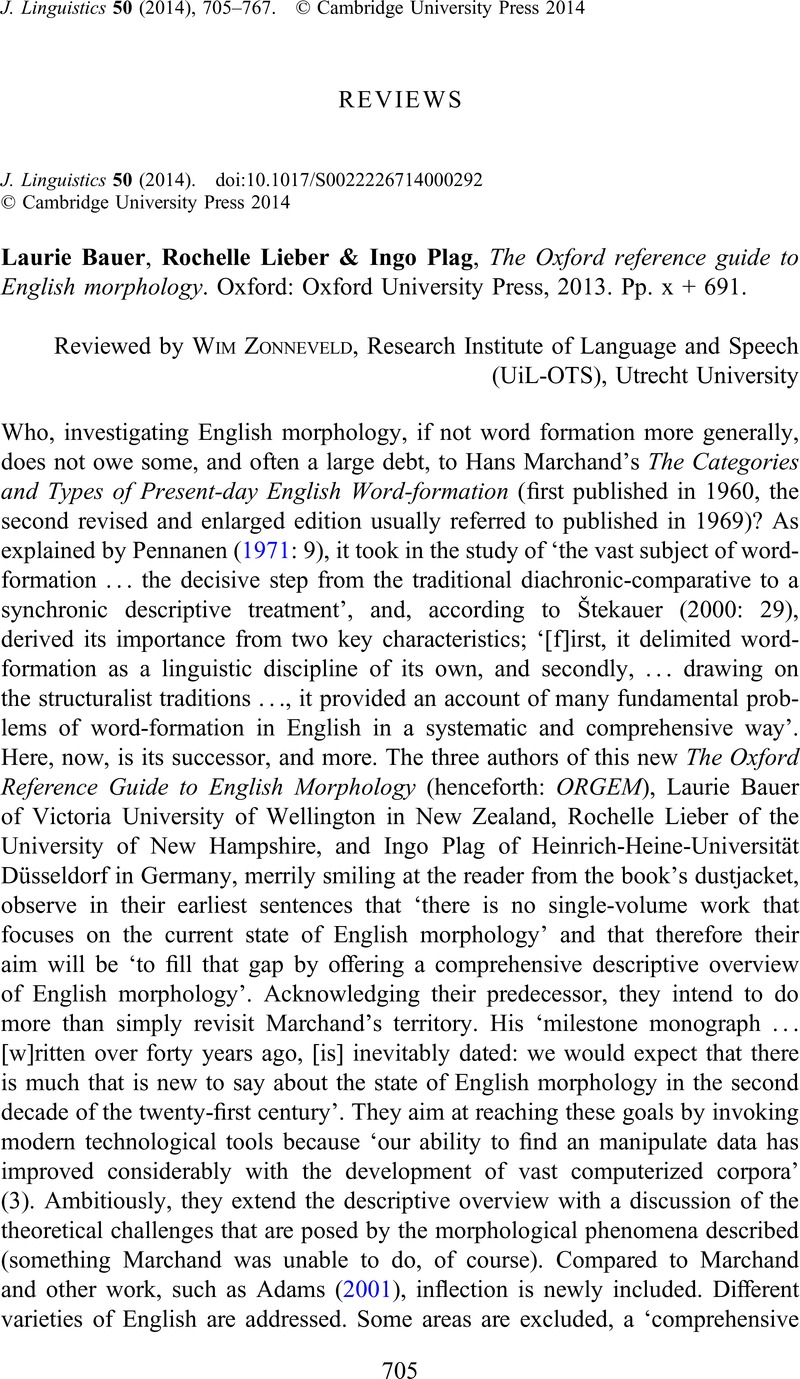No CrossRef data available.
Article contents
Laurie Bauer, Rochelle Lieber & Ingo Plag, The Oxford reference guide to English morphology. Oxford: Oxford University Press, 2013. Pp. x + 691.
Published online by Cambridge University Press: 15 October 2014
Abstract
An abstract is not available for this content so a preview has been provided. Please use the Get access link above for information on how to access this content.

- Type
- Reviews
- Information
- Copyright
- Copyright © Cambridge University Press 2014
References
REFERENCES
Baayen, R. Harald. 1993. On frequency, transparency and productivity. Yearbook of Morphology 1992, 181–208.Google Scholar
Brame, Michael K. 1974. The cycle in phonology: Stress in Palestinian, Maltese, and Spanish. Linguistic Inquiry 5, 39–60.Google Scholar
Comrie, Bernard. 1981. Language universals and linguistic typology. Chicago, IL: The University of Chicago Press.Google Scholar
Di Sciullo, Anna Maria. 2012. Perspectives on morphological complexity. In Kiefer, Ferenc, Ladányi, Mária & Siptár, Péter (eds.), Current issues in morphological theory: (Ir)regularity, analogy and frequency, 107–134. Amsterdam: John Benjamins.Google Scholar
Dixon, R. M. W. 1988. A grammar of Boumaa Fijian. Chicago, IL: The University of Chicago Press.Google Scholar
Fabb, Nigel. 1988. English suffixation is constrained only by selectional restrictions. Natural Language & Linguistic Theory 6, 527–539.Google Scholar
Kiparsky, Paul. 1982. Lexical phonology and morphology. In The Linguistic Society of Korea (ed.), Linguistics in the morning calm: Selected papers from SICOL 1981, 3–91. Seoul: Hanshin.Google Scholar
Nooteboom, Sieb, Weerman, Fred & Wijnen, Frank (eds.). 2002. Storage and computation in the language faculty. Dordrecht: Kluwer.Google Scholar
Pennanen, Esko V. 1971. Conversion and zero-derivation in English (Acta Universitatis Tamperensis, Series A, vol. 40). Tampere: University of Tampere.Google Scholar
Pinker, Steven & Prince, Alan. 1991. Regular and irregular morphology and the psychological status of rules of grammar. In Sutton, Laurel A., Johnson, Christopher & Shields, Ruth (eds.), 17th Annual Meeting of the Berkeley Linguistic Society (BLS 17), 230–251. [Reprinted in Lima, Susan D., Corrigan, Roberta & Iverson, Gregory K. (eds.), The reality of linguistic rules, 321–352. Amsterdam: John Benjamins, 1994.]Google Scholar
Plag, Ingo & Baayen, R. Harald. 2009. Suffix ordering an morphological processing. Language 85, 109–152.Google Scholar
Ricca, Davide. 2010. Corpus data and theoretical implications, with special reference to Italian V–N compounds. In Scalise, Sergio & Vogel, Irene (eds.), Cross-disciplinary issues in compounding, 237–254. Amsterdam: John Benjamins.Google Scholar
Štekauer, Pavol. 2000. English word formation: A history of research (1960–1995). Tübingen: Gunter Narr.Google Scholar




